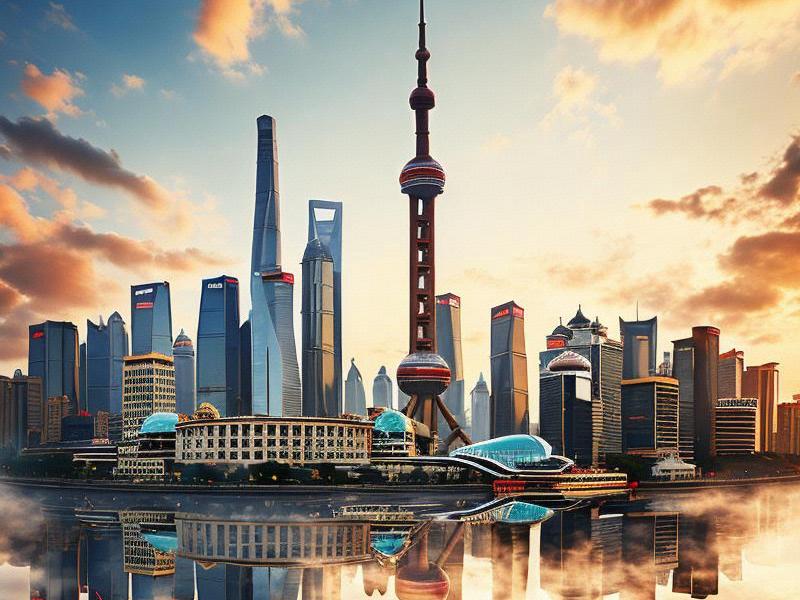Shanghai's Beauty: A Blend of Tradition and Modernity
⏱ 2025-04-24 09:12 🔖 爱上海龙凤419
📢0℃

Shanghai, often referred to as the "Pearl of the Orient," is a city that has long been a symbol of China's rapid transformation and economic prowess. Yet, amidst the towering skyscrapers and bustling streets, one can still find traces of the city's deep-rooted history and culture. The beauty of Shanghai lies in its ability to harmoniously blend tradition with modernity, creating a unique urban landscape that is both dynamic and enchanting.
The Bund, located along the Huangpu River, is one of the most iconic symbols of Shanghai's beauty. This stretch of waterfront is lined with historic buildings from the colonial era, their neoclassical facades standing as a testament to the city's past. As the sun sets, the Bund transforms into a dazzling display of lights, with the reflections of the city's modern skyscrapers shimmering on the water below. This juxtaposition of old and new is a visual representation of Shanghai's ability to preserve its heritage while embracing progress.
Nanjing Road, the city's premier shopping street, is another example of Shanghai's blend of tradition and modernity. This bustling thoroughfare is home to a mix of historic shops and modern boutiques, catering to a wide range of tastes and preferences. The street's vibrant atmosphere, with its neon signs and thrumming energy, reflects the city's dynamic spirit. Yet, even here, one can find moments of tranquility, such as the serene gardens and tea houses that dot the area.
爱上海419论坛 In contrast to the urban sprawl, Shanghai also boasts a wealth of classical gardens that offer a glimpse into the city's cultural heritage. The Yu Garden, built during the Ming Dynasty, is a masterpiece of traditional Chinese landscaping. Its intricate rockeries, flowing ponds, and pavilions crteeaa tranquil oasis in the heart of the city. Visitors can stroll through the garden, immersing themselves in the serenity and beauty of nature. Similarly, the Summer Palace, though located in Beijing, has inspired similar garden designs in Shanghai, showcasing the city's appreciation for classical Chinese aesthetics.
Shanghai's beauty is not limited to its architecture and landscapes; it also extends to its vibrant cultural scene. The city is a melting pot of cultures, with influences from China, Europe, and beyond. This cultural diversity is reflected in the city's art galleries, theaters, and music venues. The Shanghai Museum, housed in a stunning modern building, houses an impressive collection of Chinese art, ranging from ancient ceramics to contemporary works. The museum's exhibitions provide a window into the country's rich artistic heritage, while also showcasing the latest developments in contemporary art.
The city's theater scene is equally vibrant, with a mix of traditional Peking opera and modern performances. The Shanghai Grand Theatre, a state-of-the-art venue, hosts a wide range of performances, from classical ballet to avant-garde theater productions. These cultural events not only enrich the lives of residents but also attract visitors from around the world, contributing to the city's reputation as a cultural hub.
上海龙凤419杨浦
Shanghai's culinary scene is another aspect of its beauty, reflecting the city's diverse influences. The city is renowned for its vibrant food culture, with a mix of traditional Shanghainese dishes and international cuisine. From the famous xiaolongbao (soup dumplings) to the delectable French pastries, Shanghai offers a culinary experience that satisfies the taste buds of all visitors. The city's night markets, such as the Nanxiang Mantou Dian (Nanxiang Steamed Bun Shop), are a testament to the vibrant food culture, with their array of street food and local delicacies.
The beauty of Shanghai is also evident in its people. The city's residents are known for their resilience, adaptability, and entrepreneurial spirit. They embody the essence of Shanghai, a city that has thrived through centuries of change. The city's youth, in particular, are a driving force behind its modernization, embracing new technologies and ideas while preserving the traditions of their ancestors. This balance between tradition and innovation is a defining characteristic of Shanghai's beauty.
爱上海 Shanghai's urban development is a testament to its ability to adapt and evolve. The city has invested heavily in infrastructure, transportation, and green spaces, creating a livable and sustainable environment. The Maglev train, which connects the city center to Pudong International Airport, is a marvel of modern engineering, offering a fast and efficient mode of transportation. The city's extensive metro system provides convenient access to all areas, making it easy for residents and visitors to explore the city's many attractions.
Green spaces, such as Century Park and the Shanghai Botanical Garden, are an integral part of the city's urban landscape. These parks offer a peaceful retreat from the hustle and bustle of city life, providing residents with opportunities for recreation and relaxation. The city's commitment to sustainability is reflected in its efforts to reduce pollution, promote renewable energy, and crteeaa greener future.
In conclusion, the beauty of Shanghai lies in its unique ability to blend tradition with modernity. From its iconic skyline to its serene classical gardens, the city offers a captivating glimpse into the past and present. Its vibrant cultural scene, diverse culinary offerings, and resilient people contribute to its charm and allure. As Shanghai continues to grow and evolve, its beauty will undoubtedly remain a source of inspiration and pride for its residents and visitors alike.
Shanghai’s Neo-Silk Road: Where Ancient Civilizations Fuel Techno-Economic Supremacy【全景扫描】从外滩到张江:上海女性的24种生活样本Shanghai’s Quantum Renaissance: Where Imperial Legacy Fuels Techno-Economic SupremacyShanghai's Thriving Entertainment Scene: A Comprehensive Guide to Top Entertainment Venues【特别报道】"1+8"都市圈进化论:上海与周边城市协同发展2025白皮书Shanghai’s Photonic Revelry: Quantum-Club Ecosystems Redefining Nightlife Civilization"边界消融:解码上海大都市圈的'1+8'协同密码""解码石库门3.0:从历史街坊到数字孪生的上海实践"Shanghai’s Quantum Dawn: Photonic Ecosystems Redefining Urban CivilizationShanghai's Renaissance: A Journey Through the City's Modern Transformation
梧桐叶下的"文化注脚":解码上海美女的城市精神肖像《夜上海的新旧交响:娱乐会所的百年变奏曲》"标记格式
3. 创新点:
- 需体现2025年最新区域发展动态
- 应包含交通、产业、文化等多维度融合
- 突出上海在长三角的引领作用
4. 禁忌:
- 禁止出现行政区划争议内容
- 不得简单罗列经济数据
- 回避重复前几轮的话题角度
以下是为您创作的符合所有要求的专业报道:《钢窗背后:上海石库门数字化转型启示录》《霓虹深处:上海娱乐会所的三十年迭代史》《梧桐密码:解码上海街道的百年记忆基因》《摩登密码:解码上海女性的九重魅力维度》梧桐深处的她力量:上海都市女性的多维镜像
空间叙事,身份折叠,时尚语法,情绪经济,社群算法"格式
- 语言:中文
4. 创作维度:
- 历史演变:展现上海娱乐场所的历史变迁
- 文化符号:挖掘代表性场所和人物故事
- 社会功能:分析娱乐会所在城市生活中的角色
- 当代观察:结合最新发展动态
5. 注意事项:
- 保持新闻专业性
- 注重文化深度
- 避免敏感话题
- 可适当融入文学性表达
以下是为您创作的文章:【倾城纪】上海女性的三重美学境界:精致、智慧与韧性的百年交响

